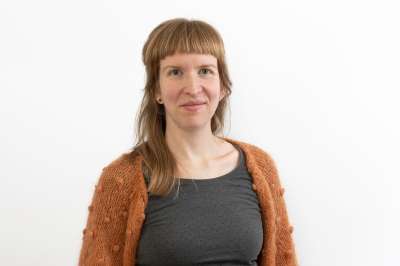Division of Environment and Natural Resources
From blue waste to green resource: Fish sludge as fertiliser in agriculture (FishBash)

End: dec 2024
Start: jan 2019
The aim of this project is to contribute to the development of recycling fertiliser products based on fish sludge, which can replace parts of the mineral fertiliser currently used in agriculture

| Status | Active |
| Start - end date | 01.01.2019 - 31.12.2024 |
| Project manager | Eva Brod |
| Division | Division of Environment and Natural Resources |
| Department | Bioresources and Recycling Technologies |
| Funding source | The Research Council of Norway (HAVBRUK2) |
The linearity of nutrient flows in aquaculture, partly originating from land-based feed production, makes current fish farming practices highly unsustainable. Using feed residues and faeces of farmed fish (fish sludge) as a fertiliser product in agriculture, can contribute to closing nutrient cycles. So far, the development of treatment technologies for fish sludge has mainly been motivated by keeping costs low and by reducing odour, rather than by producing high-quality fertiliser products. The coming fertiliser regulation is expected to impose the need for transportable fish sludge products to avoid further soil accumulation of phosphorus in husbandry-dense areas. Therefore, both aquaculture, agriculture and policy makers are in need of more knowledge on how to develop recycling fertiliser products based on fish sludge, which can be transported to areas demanding extra phosphorus fertiliser.
As part of this project, fish sludge from five land-based hatcheries was chemically analysed in 2019 and 2020; four fish sludge products, which were dried by different technologies, a liquid digestate after anaerobic digestion for biogas production and a dried digestate. We conducted two biannual field experiments in the Østfold area in cereals (2019-2020) and an incubation experiment in the laboratory (2020).
The quality of fish sludge as fertiliser varied, also for sludge originating from the same hatchery. The liquid digestate showed good nitrogen effects but drying reduced its nitrogen quality. In dried fish sludge products, nitrogen was mainly present in recalcitrant organic forms, independent of the applied treatment technology. Based on the results we suggest a new hypothesis implying that the nitrogen quality in dried fish sludge will to a larger degree be affected by the ratio of feed residues to excrements than by the applied treatment technology. Accordingly, dried fish sludge with a high content of feed resides will have a better nitrogen effect than fish sludge with a high content of excrements. The solubility of phosphorus was low in all fish sludge products.
The composition of nutrients in fish sludge was unbalanced, with a low ratio between nitrogen and phosphorus and a low potassium content relative to crop demands. Analyses of 2-4 fish sludge samples taken at various treatment points of each of the five treatment plants showed that dewatering reduced the nitrogen and potassium content in the final product. Drying further reduced the nitrogen content of fish sludge. To efficiently utilise nutrients in fish sludge as fertiliser in agriculture, it must be combined, e.g. with mineral fertiliser containing both nitrogen and potassium. In that way fish sludge can be turned into valuable fertiliser products with balanced nutrient ratios.
Most of the fish sludge products were in quality class I or II according to the Norwegian fertiliser regulation, due to elevated cadmium and/or zinc concentrations. According to the current fertiliser regulation, most of the products can hence be used with up to 20 kg dry matter per hectare and year. This is a considerably larger amount than what is appropriate to be uses based on the phosphorus content in fish sludge. The nitrogen supply on the other is often inadequate as compared to plant demands, unless fish sludge is combined with additional mineral fertiliser. One of the fish sludge products was in quality class III for zinc and can therefore not be utilised as fertiliser in agriculture. Two years after establishment of the field experiments, the cadmium concentration in grains was not significantly affected by fertilisation with fish sludge. The zinc concentration in grains, however, was significantly increased after application of single fish sludge products.
One of the subgoals of the prosjekt has been to investigate whether the nitrogen effect of fish sludge can be predicted by simple laboratory methods. Incubation experiments are a cost-effective method, which has been proven to give a good indication of the plant availability of nitrogen in fish sludge. In the further course of the project, we want to explore whether chemical extractions and spectroscopy can be used for the same aim.

